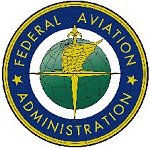Mon, Mar 10, 2025
NBAA, EAA, NATA, Other Industry Reps Confab With FAA Leaders On Key Issues
On Thursday March 6, 2025, senior leaders in the FAA met with over two dozen leaders of aviation and labor organizations at its headquarters in Washington, DC, to identify and discuss the key safety issues facing both the agency and pilots in an effort to make general and business aviation safer.

What was billed as the General and Business Aviation Call to Action to identify concrete steps to address the recent safety incidents was held to bring together the FAA and the aviation organizations representing the vast majority of pilots, manufacturer, operators, and others.
Moderating the sessions were senior FAA leaders along with Ed Bolen, President and CEO of the National Business Aviation Association, Sean Elliott, Vice President of Advocacy and Safety for the Experimental Aircraft Association, and Janny Ann Urban, Managing Director of Air Charter and Maintenance for the National Air Transportation Association.
Chris Rocheleau, Acting FAA Administrator said, “Safety is a collective effort that requires constant, proactive collaboration among all stakeholders. Complacency is the enemy of safety and we need to be vigilant to address emerging risks before they become problems.”
The sessions addressed three general topics: IFR/VFR Interactions, Safety Drift, and Safety Management.
What came out of the meeting were the following:
- The FAA will communicate reminders to pilots through various channels
- Checking Notices to Airmen (NOTAMs) for situations they can encounter during flight, including Temporary Flight Restrictions
- Being familiar with their destination airport by reviewing aeronautical charts, Arrival Alert Notices and the FAA’s From the Flight Deck video series
- Avoiding complacency by paying close attention to pre-flight checklists
- Always paying attention to onboard collision warnings even if the pilots don’t think an actual conflict will occur
The agency will also
- Initiate a safety-risk analysis of close encounters between pilots flying visually and pilots flying under air traffic control on an IFR flight plan
- Increase FAA Safety Team (FAASTeam) outreach on radio communication phraseology, NOTAMs and operations in and around highly controlled Class B airspace
- Continue to work with Part 135 and air tour operators to implement mandatory Safety Management Systems (SMS) to meet the implementation dates in Part 5
- Explore additional tools for pilots to assess operational risk and their own performance
The FAA said the Call to Action will spur additional safety collaboration between the agency and general and business aviation communities. To accomplish this, the agency will leverage existing partnerships such as the General Aviation Joint Safety Committee and the Aviation Safety Information Analysis and Sharing (ASIAS) database
More News
Airplane Bounced About 3 Ft Then Touched Back Down And Then, With No Brakes Applied, The Airplane Began Veering To The Left Analysis: The pilot entered the airport traffic pattern >[...]
Aero Linx: British Microlight Aircraft Association (BMAA) The primary focus within all aviation activity is SAFETY. In all aspects of our sport SAFETY must come first, whether it b>[...]
From SnF25 (YouTube Edition): William Wynne Builds Practical Aircraft Engines on the Corvair Platform Seeking an affordable alternative to the traditional aircraft engine options, >[...]
How To Get A Story On Aero-TV News/Feature Programming How do I submit a story idea or lead to Aero-TV? If you would like to submit a story idea or lead, please contact Jim Campbel>[...]
From 2023 (YouTube Edition): Bridge of CiES CiES Inc. is a Bend, Oregon-based designer and manufacturer of modular embedded aircraft systems and sensors. The company’s fuel-l>[...]
 NTSB Final Report: Aviat A1
NTSB Final Report: Aviat A1 ANN's Daily Aero-Linx (07.08.25)
ANN's Daily Aero-Linx (07.08.25) Classic Aero-TV: Fly Corvairs Reliable Engine Alternative
Classic Aero-TV: Fly Corvairs Reliable Engine Alternative ANN FAQ: Contributing To Aero-TV
ANN FAQ: Contributing To Aero-TV Classic Aero-TV: CiES Fuel-Quantity and e-Throttle Systems Praised
Classic Aero-TV: CiES Fuel-Quantity and e-Throttle Systems Praised



